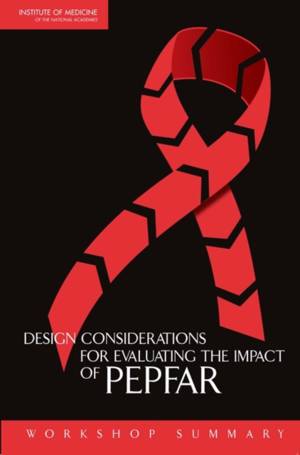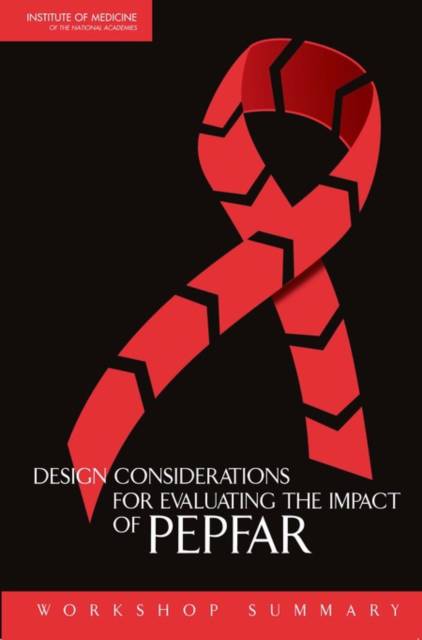
- Afhalen na 1 uur in een winkel met voorraad
- Gratis thuislevering in België vanaf € 30
- Ruim aanbod met 7 miljoen producten
- Afhalen na 1 uur in een winkel met voorraad
- Gratis thuislevering in België vanaf € 30
- Ruim aanbod met 7 miljoen producten
Zoeken
Design Considerations for Evaluating the Impact of Pepfar
Workshop Summary
Institute of Medicine, Board on Global Health
Paperback | Engels
€ 74,45
+ 148 punten
Omschrijving
Design Considerations for Evaluating the Impact of PEPFAR is the summary of a 2-day workshop on methodological, policy, and practical design considerations for a future evaluation of human immunodeficiency virus/acquired immunodeficiency syndrome (HIV/AIDS) interventions carried out under the President's Emergency Plan for AIDS Relief (PEPFAR), which was convened by the Institute of Medicine (IOM) on April 30 and May 1, 2007. Participants at the workshop included staff of the U.S. Congress; PEPFAR officials and implementers; major multilateral organizations such as The Global Fund to Fight AIDS, Malaria, and Tuberculosis (The Global Fund), the Joint United Nations Programme on HIV/AIDS (UNAIDS), and the World Bank; representatives from international nongovernmental organizations; experienced evaluation experts; and representatives of partner countries, particularly the PEPFAR focus countries. The workshop represented a final element of the work of the congressionally mandated IOM Committee for the Evaluation of PEPFAR Implementation, which published a report of its findings in 2007 evaluating the first 2 years of implementation, but could not address longer term impact evaluation questions.
Specificaties
Betrokkenen
- Auteur(s):
- Uitgeverij:
Inhoud
- Aantal bladzijden:
- 142
- Taal:
- Engels
Eigenschappen
- Productcode (EAN):
- 9780309116725
- Verschijningsdatum:
- 5/10/2008
- Uitvoering:
- Paperback
- Formaat:
- Trade paperback (VS)
- Afmetingen:
- 152 mm x 229 mm

Alleen bij Standaard Boekhandel
+ 148 punten op je klantenkaart van Standaard Boekhandel
Beoordelingen
We publiceren alleen reviews die voldoen aan de voorwaarden voor reviews. Bekijk onze voorwaarden voor reviews.











